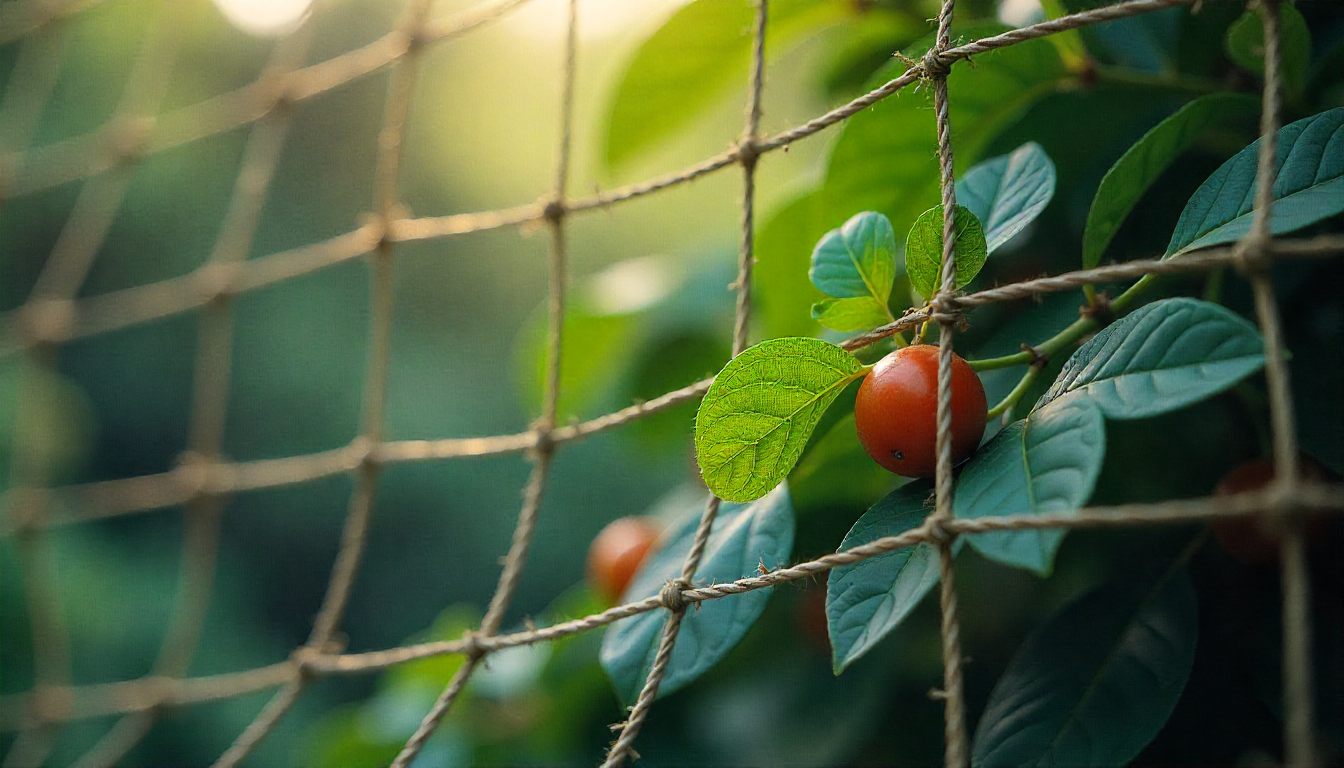A netting is something many people use but not everyone knows about. A netting can be made from string, rope, or even plastic, and it is used to catch, protect, or hold things. Fishermen often use a netting to catch fish in rivers, lakes, or oceans. Farmers might use it to protect fruits and vegetables from birds. People also use netting in sports, like in soccer goals or tennis courts. Even in homes, netting can keep bugs away from beds or gardens. The main idea of a netting is simple—it acts as a barrier or a catcher. Different kinds of netting have different shapes and sizes, depending on what you want to catch or protect. Some netting is very strong, while some are soft and light. Learning about a netting helps you understand how people make life easier, safer, and more organized.
A netting is not only useful but also very easy to make or buy. You can find netting for fishing, gardening, sports, and even crafts. For fishing, the netting usually has small holes so fish cannot escape. In gardens, netting keeps birds or insects away from plants. Sports netting is made strong to stop balls from going outside the play area. The material and size of a netting depend on what it is meant for. Some netting is made from nylon or plastic, which lasts longer in water or outside in the sun. Some netting is soft, like cloth or cotton, and is used inside homes or for arts and crafts. People also use netting in factories to protect products or in construction sites for safety. Knowing about a netting can help you choose the right type for your needs and understand why it is such a handy tool in daily life.
What Is a Netting and How Does It Work?
A netting is a tool made from threads, ropes, or strings that are knotted or woven together to make a mesh. It works like a barrier, catcher, or protector depending on how you use it. Netting can catch fish in rivers, lakes, or oceans, stop birds from eating fruits in gardens, or even keep balls from flying away in sports. The holes in the netting let air and water pass through but trap or block what you want to control. Some netting is soft, while some is very strong to handle heavy weight. Netting is easy to install and can be shaped to fit the area where it is used. By understanding how a netting works, you can use it safely and wisely in fishing, farming, sports, or even at home to solve small problems in a simple way.
Different Types of A Netting You Can Use
There are many types of a netting depending on where you want to use it. Fishing netting has small holes to catch fish without letting them escape. Garden netting is light and soft to protect plants from birds and insects. Sports netting is very strong to stop balls and keep players safe. Safety netting is used in construction or factories to protect people and products. Some netting is made from cotton or cloth, while others are made from plastic, nylon, or metal. Each type has its own size, strength, and purpose. Choosing the right netting type is important so it does its job well. Understanding the differences makes it easier to pick a netting for your activity.
Why a Netting Is Important in Fishing and Farming
A netting is very useful for fishing because it helps catch fish quickly and safely. Without netting, fishermen would spend much more time trying to catch fish with their hands or rods. In farming, a netting protects fruits, vegetables, and crops from birds, insects, and other animals. It also helps farmers save money because fewer crops are damaged or eaten. Netting can cover gardens, ponds, and orchards to keep unwanted pests away. It is lightweight and easy to move, so farmers can use it in different areas. Using a netting is a simple solution that makes fishing and farming more productive, safe, and efficient.
A Netting for Sports and Fun Activities
Netting is used in many sports to make games safe and fun. Soccer goals, tennis courts, volleyball, and badminton all use netting. The netting stops balls or shuttlecocks from leaving the play area. It also protects players, spectators, and surrounding property. Netting can be placed indoors or outdoors, depending on the game. Some sports netting is very strong, while some are light and easy to move. Using netting makes sports more organized and less risky. Kids, adults, and professional players all benefit from netting during games because it keeps everyone safe and ensures the game is played correctly.
How to Choose the Right A Netting for Your Needs
Choosing the right netting depends on what you want to use it for. Look at the size of the netting holes, the material, and the strength before buying. For fishing, small holes work best. For gardens, soft plastic or cloth netting is enough. Sports netting needs to be strong and durable. Safety netting must meet special standards to protect people. You also need to check if the netting is easy to install and move. Picking the right netting saves time and money and ensures it works well. A netting that is too weak or wrong size will not protect or catch what you want properly.
Easy Ways to Make Your Own A Netting at Home
Making a netting at home is simple and fun. You need some string, rope, or yarn and scissors. First, cut the material into equal lengths. Then tie or weave the pieces together to make a grid pattern. You can make big holes for plants or small holes for catching tiny fish. You can also use old fabrics or recycled materials to create netting. Homemade netting is cheaper and can be shaped to fit your needs. It is a creative way to use netting for gardens, pets, crafts, or even small fishing tasks. Everyone can try it with a little patience and practice.
Tips for Taking Care of Your Netting
Taking care of your netting keeps it strong and long-lasting. Always clean it after use to remove dirt, leaves, or fish remains. Dry netting properly before storing to avoid mold and damage. Check for holes or broken threads regularly and repair them quickly. Store the netting in a cool, dry place when not in use. Avoid exposing it to sharp objects or harsh chemicals. Using netting carefully and maintaining it regularly ensures it works well and lasts for years. Proper care makes netting safe, effective, and ready whenever you need it.
Conclusion
A netting is a simple tool that makes many tasks easier. It can catch fish, protect plants, or make sports safe. Netting comes in many types and materials to fit different needs. Learning how to use a netting helps you solve problems in a safe and easy way.
Taking care of a netting is just as important as using it. Cleaning, repairing, and storing it properly makes it last longer. Whether at home, in gardens, or in sports, netting is a useful tool for everyone. By understanding and using a netting, you can enjoy its many benefits every day.
FAQs
Q: What is a netting used for?
A: A netting is used to catch, protect, or hold things like fish, plants, or sports balls.
Q: Can I make a netting at home?
A: Yes, you can make netting at home using rope, string, or old fabrics by tying or weaving them into a grid.
Q: What types of netting are there?
A: There are fishing netting, garden netting, sports netting, safety netting, and craft netting.
Q: How do I take care of a netting?
A: Clean it after use, dry it, check for damage, repair holes, and store it in a dry place.
Q: Why is netting important in farming?
A: Netting protects crops and fruits from birds, insects, and other animals, reducing damage and saving money.




